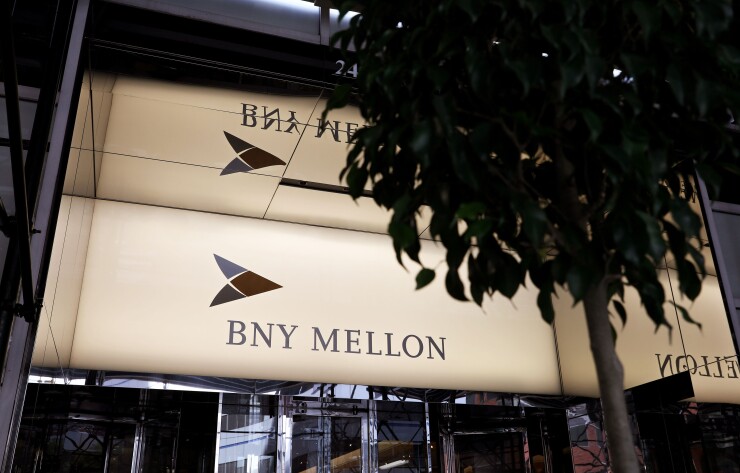
BNY Mellon is teaming with a fintech to enable payments for people outside of the traditional financial services market, potentially freeing consumers from hefty transaction fees they pay to alternative providers.
MoCaFi, a Black-owned financial services platform, will enable digital disbursements for consumers who may be unbanked but still receive funds from BNY Mellon's government and business clients. The deal comes as banks increasingly work with fintechs to improve speed to market or add breadth to new financial products, addressing gaps that often exist on both sides of the collaboration.
"We wouldn't be doing this without the partnership," said Carl Slabicki, co-head of global payments for BNY Mellon, saying the bank can benefit from MoCaFi's expertise in building financial services in underbanked markets. "One of the challenges that we have always had is how we can help clients interact with people that are outside of the system."
MoCaFi will integrate with BNY Mellon's Vaia platform, which enables government agencies and corporate users to distribute payments for disaster relief, financial aid and employee payroll.
The BNY Mellon/MoCaFi partnership will additionally offer an FDIC-insured account, a debit card and credit reporting service that consumers will access through the MoCaFi platform.
There are two use cases BNY Mellon hopes to address. One is to provide its clients with an easier connection to employees that may not have a bank account. Another is to provide a digital rail for government disbursements for BNY Mellon's public sector clients.
The bank has been improving its government disbursement services since the pandemic. During that health crisis, the payments industry ran into difficulties
"When paying someone without a bank account, typically the check goes through the mail and it's hard to get funds to people, especially if it's a time of crisis," Slabicki said. "They usually go to a check-cashing place where there are high fees."
About 4.5% of U.S. households were unbanked at the end of 2021, according to the
"There's a huge opportunity to emphasize underserved markets," said Stewart Watterson, a strategic advisor for Aite-Novarica. "Banks have been trying to crack the code for years, but have not been successful."
BNY Mellon and MoCaFi will offer no-fee ATM access; a search of about a dozen check cashing services found fees of between 2% and 10%.
"There's always been a gap in traditional banking in reaching underserved areas," Slabicki said. "Since MoCaFi focuses on these areas and works with local communities and governments, this partnership makes it easier for us."
MoCaFi, which was founded in 2016, works with government agencies, financial firms and other parties to support payments and other financial services. That includes
In May, MoCaFi raised $33 million in Series B financing led by Commerce Ventures, which it will use to expand. The company is live in more than a dozen cities, and MoCaFi estimates its partnership with BNY Mellon will enable it to reach more communities.
"By integrating with the Vaia platform, we are committed to creating a seamless experience for businesses and government agencies to provide disbursements to individuals and constituents," said Wole Coaxum, CEO of MoCaFi, in an email. "Digital banking options are pivotal in closing the social and economic wealth gap."
Banks and fintechs have traditionally been rivals, though the two industries are increasingly working together to address shortcomings in product development and deployment. Fintechs often have more access or data on local markets or specific niches than banks. But banks have scale and are more regulated than fintechs, enabling collaborations to offer a wider range of financial services.
Banks and fintechs are working together to streamline processing for
"The next opportunity for banks to reach underserved markets is fintech partnerships," said Watterson, adding that the banks are not the direct point of contact with the new markets, but provide resources and financial products through third parties.
The desired result is the erosion of alternative sources, such as money-service businesses that operate at a high cost, according to Watterson. But banks don't typically have the market analysis expertise to bring underbanked into the financial system, Watterson said, adding that the fintechs engage more directly with the underserved community while banks provide the resources that fintechs need to
"Most large banks have tried to compete with the challengers in this area, but that hasn't worked well," Watterson said.






